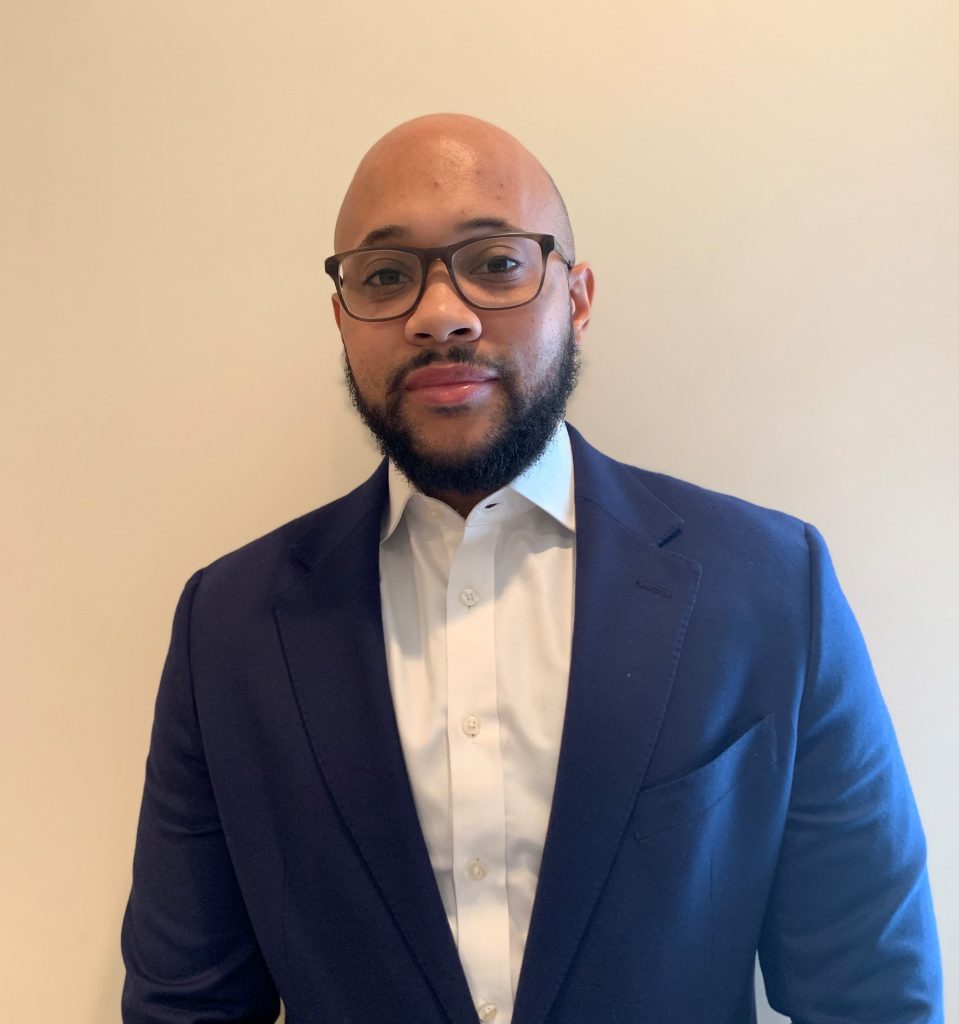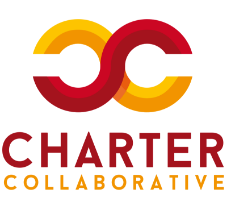
Brandon Johnson
Founding Principal,
The Social Justice School
The Social Justice School
Location: Washington, DC
Year Opened: 2020
Student enrollment: 50
Grades served: 5th & 6th grade
Website: www.thesocialjusticeschool.org
Student Demographics
Black/African-American: 94%
Hispanic/ Latino: 6%
Homeless Students: NA
FRPM/FRPL %: 66%
Students with Disabilities: 22%
ELL/ESL Students: 4%
MY JOURNEY TO SJS
When I was in third grade I had a really adverse experience. Third grade is critical in terms of kids’ educational trajectory. I had two parents who were very successful and strong advocates for education, but I was a struggling reader. At Back to School Night, my teacher told my parents she wanted to refer me for special education and possibly retain me. Up to that point, I loved school and dinosaurs and outer space. I had been working hard on spelling and was excited to share that I got a 9 out of 10 on my recent test, but my teacher as an older white woman didn’t really see me and how I was trying to show up in her class. That experience made me not want to be in school or do anything connected to education for a long time.
I attended Fisk University in Nashville, an HBCU, as an undergrad. An anthropology class led me to think back to my earlier educational experiences. I had gone to school in Silver Spring, MD, a diverse district with relatively high performing schools and students who went on to college. When I learned that most Black and Brown kids didn’t have those types of experiences, I wanted to do something about our education system. I wanted to make my parents proud, though, so initially I went into business.
I got my Masters in Community and Social Development at Case Western University. In grad school, I worked at an alternative high school, mainly with students who had been kicked out of traditional schools, and I knew I wanted to do something in education. The connection I had with my students and the love they showed me was profound. I did the Urban Teachers program and worked at a juvenile detention center. Then, I taught at two public schools in Ward 5 in DC, mostly 5th and 6th grade Math, and worked as an instructional coach. I started dreaming about what education could look like, and I became an Education Innovation fellow with CityBridge Education. I met Myron at a CityBridge happy hour for people interested in starting schools. We connected there but didn’t come back together to create the Social Justice School until a year later.
NO SUCH THING AS A SNOW DAY
We see ourselves as a community of designers and see challenges as opportunities for liberation. We started by talking to families and staff members to make sure they see their input in our model. We’ve had several iterations on our instructional model and schedule. Asynchronous learning is really challenging for students at the middle school level. There are challenges with students being platform-proficient and always being at home.
Originally, we were going to go with a full hybrid model, but we realized that that wouldn’t work, because some scholar-activists wouldn’t have access at home. Right now, we have 80% of scholars at home and 20% in building.
So far, we’ve seen that students are really engaged. We started by bringing in students who would be most marginalized by not being in the building: students with IEPs, students whose parents are essential workers. When we noticed additional kids were having adverse experiences due to lack of access to technology or unproductive spaces to learn, we invited them in. We brought students in for in-person learning by cohort and had a staggered start.
COVID-19 has taught us that there’s no such thing as a snow day anymore. We’ve built up our capacity to provide support outside the building. Teachers’ capacity to use multiple programs has increased. Behavioral issues have decreased. More time is spent on supporting teachers and academics throughout the day. Students’ ability to complete work online has improved. This experience is helping to prepare students for college, because they’re learning how to plan, complete work independently, and submit their assignments online.
We’ve had a higher level of engagement with families, which has been an added benefit. We have an amazing family engagement specialist who has been the point person for family needs. She does wellness calls on a weekly basis. We’ve been able to provide gift cards to families experiencing food shortages. Parent outreach and community building are places where we’ve definitely seen bright spots.
CHARTER LEADERS OF COLOR MATTER
In a school district that is made up of predominantly students of color, it’s important that they see Black male instructional leaders. Going back to my experience in 3rd grade, it took me a long time to recapture this identity of being an intellectual and having a vision that could be taken seriously. Given the racial reckoning that’s happening—or not happening—in this country, it’s important for white families to see leaders of color and build that connection and trust.
I spent most of my career in middle schools, and I’ve been disappointed by the experience and discourse that students are allowed to engage in. It’s such a pivotal time when kids check in or check out of school, especially if they don’t see themselves represented. I think it’s the best time to create a safe space where students can engage in meaningful discourse. Middle school is that crucial time for us to lift up experiences that kids can authentically engage in.
There are so many things kids are starting to see and grapple with in middle school. I want there to be a space where they feel safe to do that work as well as challenging academic work. I want for every kid what I want for my own kids: the opportunity to be seen, to be known, to be loved, and to be challenged. I want all kids’ identities to be affirmed. I want to see our students iterating and succeeding, saying “I did this” and feeling proud.
